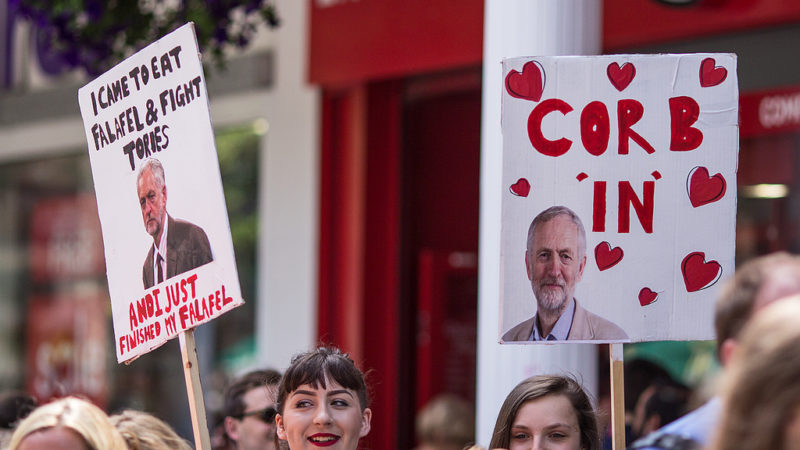Tackling nequality, nationaliation and raising the minimum wage are popular left-wing policies.

For the likes of us at Left Foot Forward, ‘left wing’ and ‘right wing’ are terms we use so much that we can lose sight of what they mean to the general public.
So it’s useful for us that YouGov has done some new polling on what policies are most recognisable to the public as ‘left-wing’.
When looking at these, it’s important to note that these policies aren’t necessarily seen as ‘the most left-wing’.
They’re just the recognisable to the most people as ‘left-wing’ – whether moderately or radically. So what are they?
One thing this shows is that about 30% of the public don’t know what left-wing and right-wing mean – but it also shows about half the country have a pretty accurate view of what a left-wing policy is.
So when you describe yourself as a left-winger, these policies are what most people think you believe in.
Fortunately, these policies are mostly pretty popular – with some exceptions.
Nationalisation of utilities and railways is probably the most popular – with even Tory voters supporting it. Similarly, even Tory voters want to raise the minimum wage.
Measures to redistribute income are also very popular, at least in the abstract – although specific measures to tax the wealthy are less so.
The most controversial left-wing views are probably opposing the monarchy and opposing the UK having nuclear weapons.
Its no coincidence that these are the only two of the ten left-wing views which the Labour Party didn’t have in its last manifesto in some form.
Seven in ten Brits continue to support Britain having a monarchy with just two in ten opposed.
With nuclear weapons, the picture is a bit more mixed. Only about a quarter of the population want disarmament in any circumstances. Support for disarmament rises if framed as part of a global disarmament effort.
So what policies do the public think are right-wing?
Of these, one popular view is being “tough” on crime. One unpopular view is encouraging private-sector involvement in the NHS.
This is reflected in the Tory’s current election strategy – talk tough on crime to play to a right-wing strong point and pledge money for the NHS to neutralise a right-wing weak point.
The public’s views aren’t fixed of course – they can and do change in response to argument and events.
But in the short term, if Labour wants to win the next election, it needs to try and get the conversation onto its popular policies: nationalisation, raising the minimum wage and tackling inequality.
It also needs to try and stay away from the right’s fertile ground – like immigration, crime and nuclear weapons.
With the government having a natural dominance over the media agenda though, this will be easier said than done.
Left Foot Forward doesn't have the backing of big business or billionaires. We rely on the kind and generous support of ordinary people like you.
You can support hard-hitting journalism that holds the right to account, provides a forum for debate among progressives, and covers the stories the rest of the media ignore. Donate today.




7 Responses to “What are left-wing policies and are they popular?”
Adrian Hopper
Left and Right have become meaningless labels with elements from both sides adopting postures from the other,the struggle now exists between Authoritarian and Libertarian government models– not forgetting the fact that the true measure of libertarian values comes via the degree of popular participation,not from ‘by the people ‘ adopted rhetoric.
Campaign analysis: Let's unpick Labour and Tory rhetoric | Left Foot Forward
[…] claim anything with impunity. This means that despite the disparity between campaigns and policies (supported by polling) the public is not receiving an accurate […]